Boboiboy: The Movie 2 is the most frustrating movie I’ve watched this year. I don’t hate it. I suppose you can say that I was marginally entertained, and that there are elements that appeal to the part of me that gets high on big, flashy, screen-filling fights. Yet I had left the cinema exasperated and exhausted, as if I’ve been spending the entire movie fighting with it. I suppose we have our disagreements.
Many would probably disagree with me, too. Boboiboy: The Movie 2 is a runaway hit – it managed to gross RM25 million in just three weeks of its theatrical run, which is unprecedented for a Malaysian-made animated movie.
It’s also a Malaysian darling – a cross-media franchise (with a TV series at its core, on top of trading cards, two movies and its own comic adaptation) that’s been around since 2011, having super-powered its way into 70 countries. It even has a soft reboot, Boboiboy Galaxy, which now sees the titular protagonist and friends being heroes in space.
It’s kind of a Big Deal, even if it has largely eluded me. I’ve only ever caught the first movie when it screened in 2016, and had found it entertaining enough. So it may not be fair that I’m so incredibly frustrated at the sequel. Surely I don’t “get” Boboiboy, being so distant from the series. But trust that my frustration comes from love, not disdain for local products.
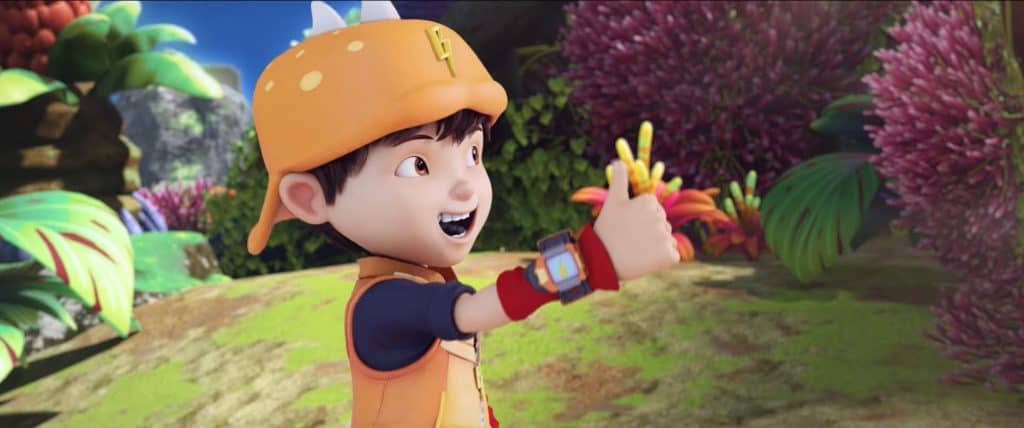
Produced by Animonsta Studios, Boboiboy is a superhero TV series about a boy, Boboiboy, who gained elemental superpowers when he encounters a lost Power Sphere called Ochobot. The elemental powers also allow Boboiboy to split into multiple elemental versions of himself, when the plot calls for it. He eventually meets friends that gain their own superpowers, too, including Yaya, who can fly and control gravity; Ying, the team speedster with time-controlling abilities; Fang, who can conjure shadow animals; and Gopal, who can… turn things into food.
The heart beating within Boboiboy and its movies is very much Malaysian – from its multi-ethnic characters to the Wau-inspired spaceship design (very cool!). However, much of the franchise, I’d argue, is powered by Japanese shounen anime (animated shows targeted at boys and male teens, typically action-driven).
The influences can be seen from Boboiboy’s visual language (lots of speed lines, fast-paced combat), to common shounen tropes (characters yelling out their attacks) and character dynamics (the pure-hearted, hot-headed protagonist, the mysterious rival-turned-friend, etc). Boboiboy: The Movie 2 even featured a gag referencing Showa-era Kamen Rider, so it’s clear where its creators’ heads are at.
This is not inherently a bad thing. But drawing too much from a pool of specific tropes and storytelling techniques means you may inevitably draw some of the muck, too.
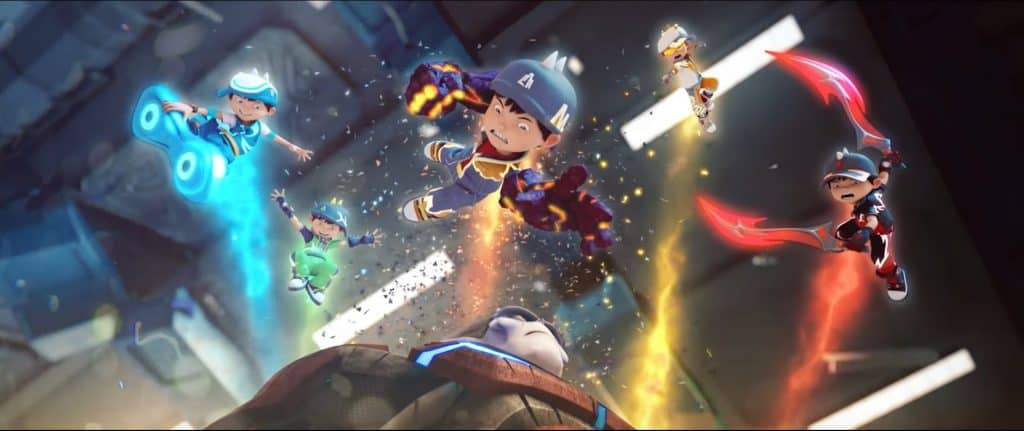
Boboiboy: The Movie 2 functions very much like the theatrical movie tie-ins of shounen anime series. You’ve probably seen some of them – every popular shounen anime, from Dragon Ball to My Hero Academia, have theatrical movies that promise big battles on the big screen, with a bigger budget.
I like my fair share of shounen movie tie-ins, but they are usually plagued with storytelling problems. Mainly, they’re incredibly restricted by their ongoing series. The movies can’t jeopardise the plot of the series, which means that they can’t take risks or make sweeping changes. They become very safe movies – existing mostly to provide big-budgeted fanservice, and perhaps generate new merchandise while they’re at it.
So how do you drive up the stakes? You usually introduce a new, one-off villain that overpowers the heroes, at least in the beginning. For Boboiboy: The Movie 2, this comes in the form of Retak’ka, who used to wield Boboiboy’s elemental powers a century ago before being sealed away. Unable to overcome Retak’ka, and having a good chunk of his powers stolen, Boboiboy and friends will need to seek out Retak’ka’s former friend – an eccentric old master named Hang Kasa – in order to learn of the villain’s weakness and perhaps train to obtain new powers.
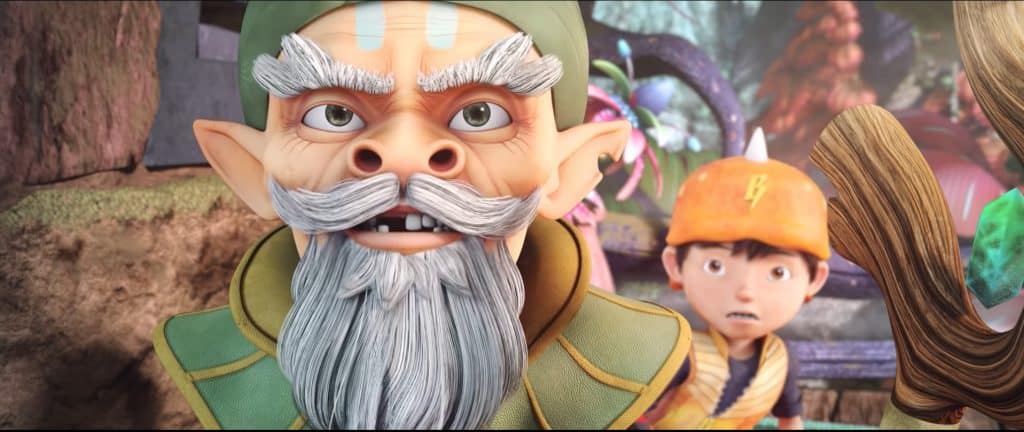
So far, so good as an excuse to have your characters punch things and showcase some newly-gained abilities. To Boboiboy: The Movie 2’s credit, the action can be thrilling. Ample use of quick cuts, slo-mo and energetic camera work goes a long way at providing some flashy, entertaining fights. The movie also looks great, with some truly great lighting and details than what its RM7 million budget (a mere fraction of what most animated movies cost) would lead you to expect.
For the Boboiboy fan, I suppose this will suffice. Yet, like most shounen anime movie tie-ins, this emphasis on one-off external stakes and action means that there’s no room for any internal conflict. As a result, it’s a movie that’s all about developing our characters’ powers but not the characters themselves.
In this movie, no one learns anything, or goes through any changes. There is no internal strife, no lessons learnt, no sacrifices made. Boboiboy gains nothing except for new powers. The only conflict in the movie is that there’s a new villain to punch, and Boboiboy needs to punch harder.

The frustrating thing here is that the movie did set up a base for a more compelling story. Early in the film, Boboiboy nearly jeopardised his galaxy-saving mission to save his frenemy Adu Du. His friends and allies admonished him for putting the mission at risk for someone who did not deserve the rescue. His teammate, Fang, was even visibly frustrated when Boboiboy, once again, makes an altruistic choice over a pragmatic one later. This established an interesting central conflict for Boboiboy — how being unflinchingly Good clashes with his career as an intergalactic peacekeeper.
Having Boboiboy come to terms with this would’ve made for some interesting introspection for the kid hero, if not to add some dramatic heft between him and his teammates. It’s even more frustrating when you see how Boboiboy’s eventual new powers would metaphorically play into this duality (saying more would be a spoiler).
This conflict, unfortunately, gets blasted out of the movie with the arrival of Retak’ka, and neither Boboiboy nor his allies have time to address anything but where to go next in order to progress the plot.
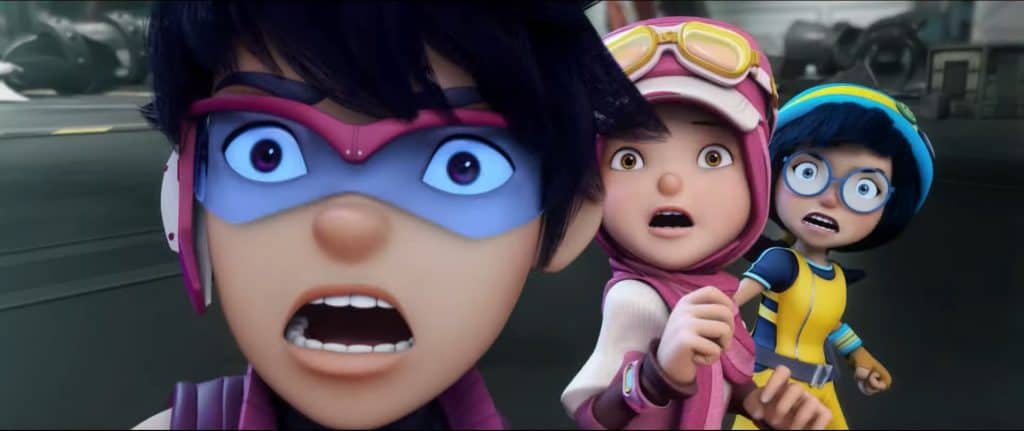
There are other similarly frustrating aspects. The movie sometimes feels like it didn’t know how to fill its extended runtime (it’s an hour and 50 minutes long), and thus packs in as many gags as possible, to the detriment of any emotional stakes. At one point, the movie was squeezing in at least five comic relief characters in one scene, and there’s so much fighting for jokes that there’s no time for Boboiboy to ruminate, let alone develop.
One wonders if writer-director Nizam Razak is too afraid to slow down, for fear of boring his young target audience. But even Kung Fu Panda (one hour and 35 minutes) knew when to let their characters take stock and process amidst the hilarity and action.

Other characters similarly skim the surface of any development. This is expected of movie tie-ins, where a limited runtime means only the more popular characters get to hog the screen. Even so, some of them in Boboiboy are approached in a manner that borders on infuriating – in particular the handling of female heroes Yaya and Ying, two uber-powerful characters who barely exhibit any agency or personality.
When they do get dialogue, it is to react in unison to something cute, or to function indistinguishably as People on Computers. By the end, I started missing the one scene in the first Boboiboy movie, in which Ying – in a burst of personality and spunk – admonished Fang in Mandarin for messing up.

Sure, Boboiboy was never my thing, and what I want from the movie will be very different from what the fans want, and that’s understandable. But I’m frustrated because what’s essentially the most successful animated movie in Malaysia can only settle on emulating the worst parts of shounen anime movies.
I’m frustrated because Boboiboy seemed like a step backwards in the larger animation world, when children’s entertainment has gone beyond providing mere action fodder as distraction. Today, we have shows like Netflix’s Trollhunters and She-ra and the Princesses of Power that deal with complex themes of sacrifice and abuse without skimping on the action and adventure. We have movies that are made-for-merchandising like The LEGO Movie 2 that can explore toxic masculinity and gender roles. Even Dragon Ball Super: Broly knew to humanise its principal antagonist and at least attempt to explore a theme of father-son legacies.
I understand writing a movie, especially for a diverse age group, can be difficult. Director Nizam Razak has shared about his writing challenges, and I can admire his resolve in creating a balanced movie – one that is thrilling, but not violent; to have twists and turns, but not be too complex.
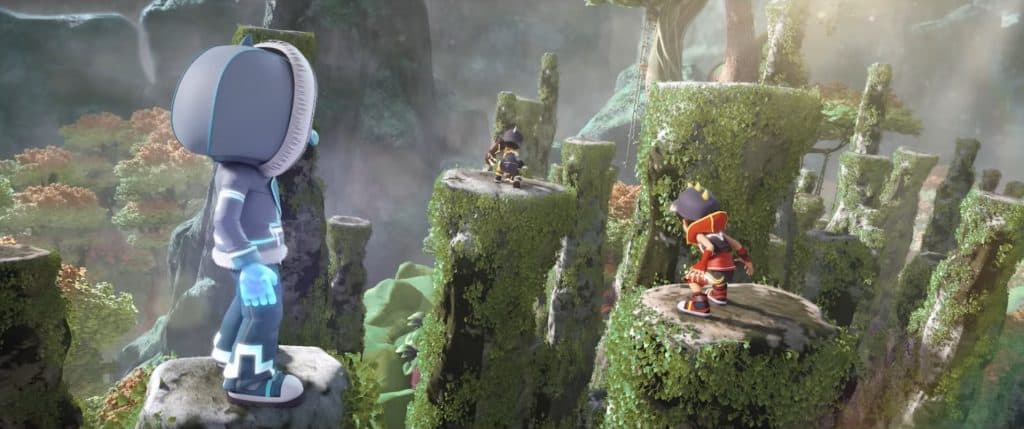
Yet I feel that an overly-balanced movie would only stay perched on its grounds, safe but not moving. In his Facebook post, Nizam writes that sad scenes are a challenge – that they’re worried about extending emotional scenes for fear that it will affect children too much.
But the best animated movies – and shows – are the ones that trust in children to make sense of things themselves. The best children’s shows are those that challenge and grip and terrify, and for when they appear too complex, that’s what parents are for. Think of some of the most lauded animated movies ever – The Lion King (1994), Inside Out, Spirited Away – and they’re all movies that trusts its audience, the kids and the adults, to make sense of it.
And trust in its audience, I think, is what Boboiboy needs in order to grow up.
Also published on Medium.

makes it a life goal to annoy everyone with random Disney trivia. When he’s not staring at a screen or holding a controller of some sort, he is thinking about curry noodles. Like right now.



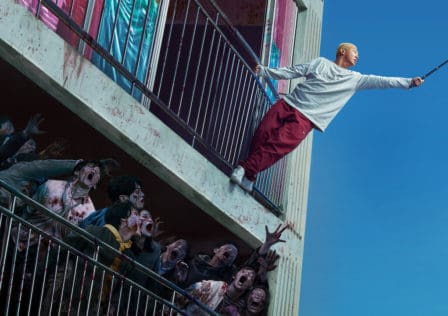
5 Comments
Margo S
Aug 29, 2019 6:11 pmI’m in the same camp where I’m not a fan of the animated series but I do respect the show for being an icon and role model for Malaysian kids. After I watched the movie, I was left with a sense of not dissatisfaction but rather a feeling of dissonance. By all accounts, the movie was entertaining and action packed (a great recipe for any movie really) but I agree, what was lacking was the emotional weight and development of the characters. The only moments that stirred my cold, icy heart was when Boboiboy saved Adudu and when he lost his powers to Retak’ka. But in the end, it felt like Boboiboy never actually stopped to ruminate on his choices and predicament (except for that one short moment with Gopal in front of Tok Kasa’s house). All in all, an entertaining movie that achieved so much and I look forward for more great storytelling from Animonsta.
Ghita Ri
Aug 29, 2019 7:03 pmThe only real counter argument I could present is that for a good chunk of the series and this movie as well, BoBoiBoy operates on a flat character arc, which is a legit thing, even with shounen anime.
It basically means that instead of the central characters growing, he instead has a good grasp on his philosophy and affects the development of others.
The thing is, as far as growth goes, BoBoiBoy mostly reached his peak early in his career and only occasionally is in need of learning new things for character growth.
Characters don’t need to have growth all the time. It’s just that we are too used to the idea of character growth that the lack of one in a story is immediately considered a bad thing.
Belle
Jun 19, 2020 7:17 pmGreat review! I just watched the movie last night with my kids on Netflix (albeit juggling btwn babysitting, chores & feeding the kids to watch with full attention), & while the graphics are pretty gorgeous & it has great cameraworks, this review perfectly sums how i feel towards the writing of the 2nd movie.
I don’t mean to pit animated movies against eachother, but this is why Ejen Ali the Movie is byfar the superior movie in terms of storytelling & character development.
Like you, i also liked BBB the first movie where Ying burst out scolding Fang in Mandarin for messing up. That was one of the highlights of the first movie that we barely get to see in the 2nd movie.
Malarvelu
Jul 03, 2020 2:50 amGood i like